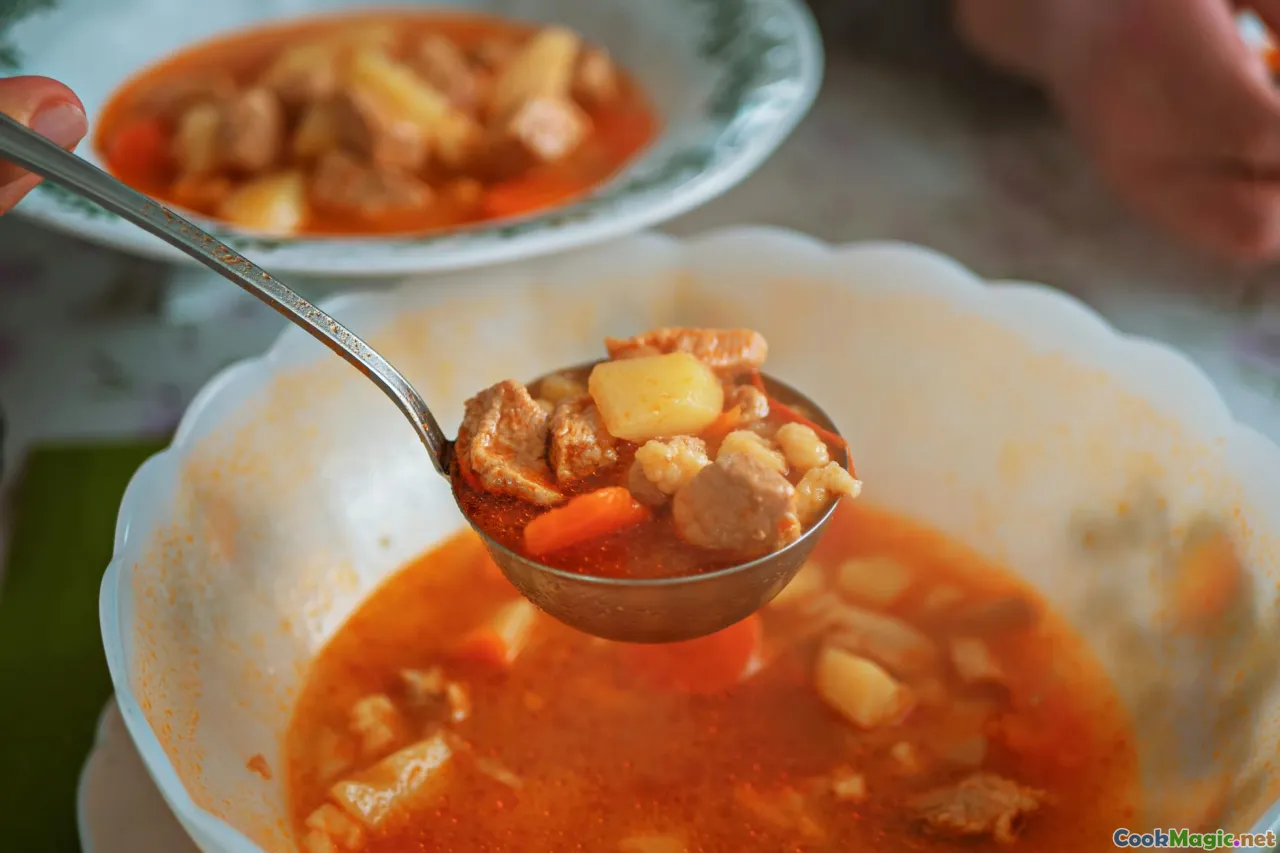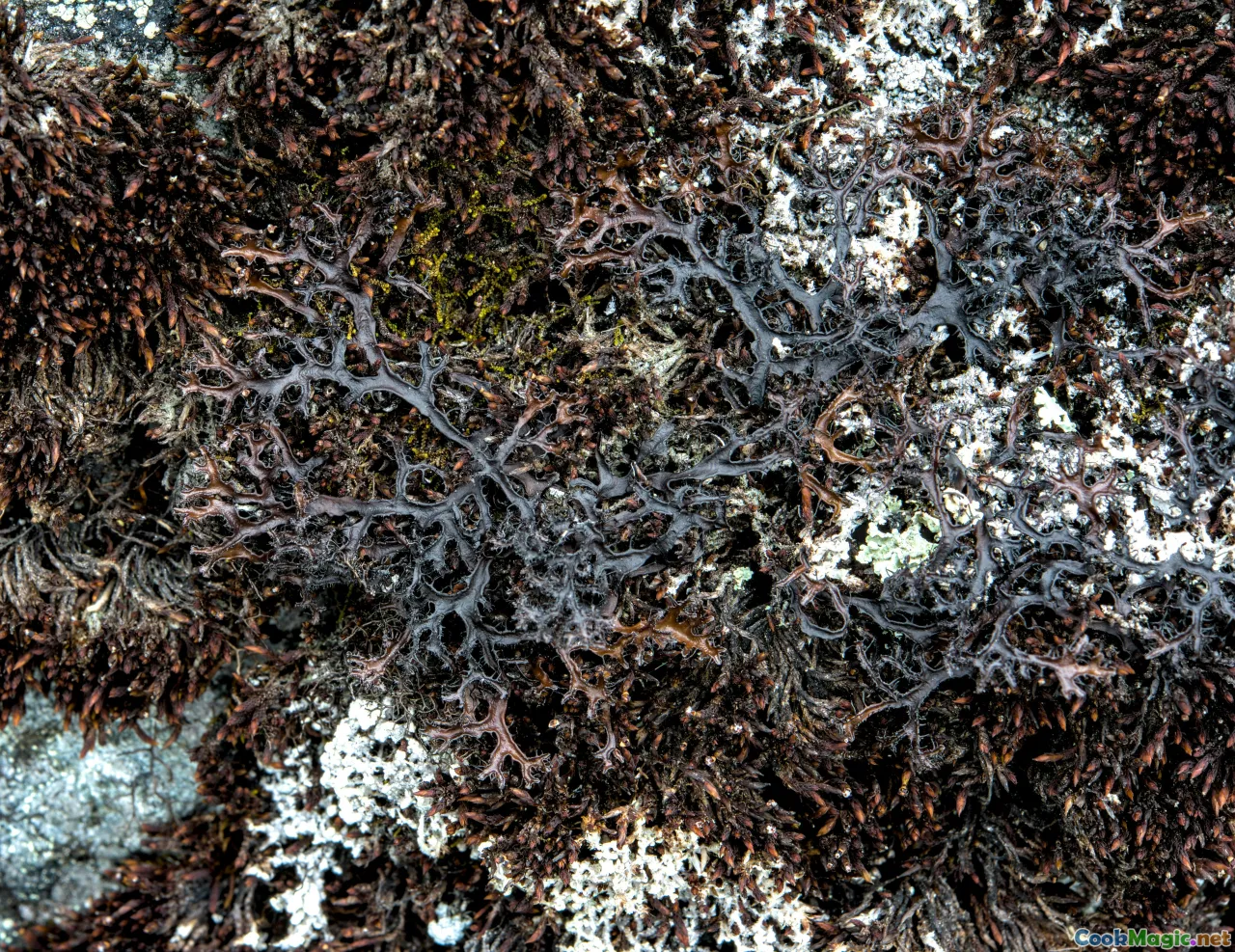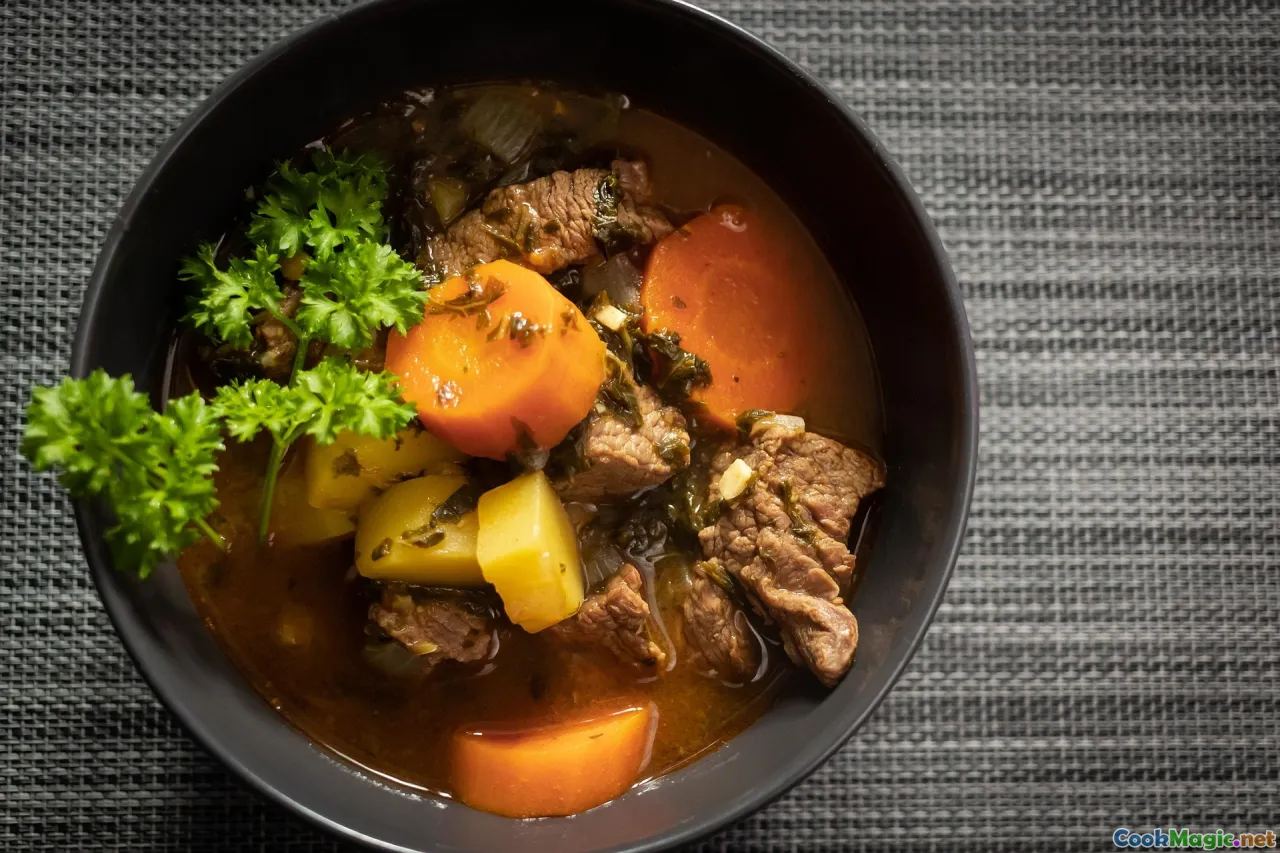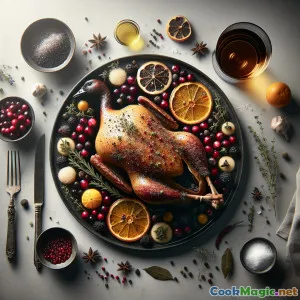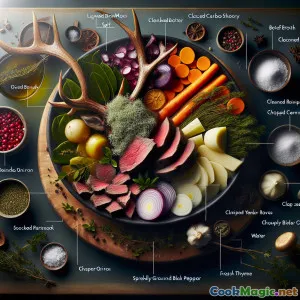
Sytyczny gulasz z karibu z dodatkiem porostów
(Hearty Lichen-Infused Caribou Stew)
(0 Recenzje)0
793
lipiec 12, 2025
Zgłoś problem
Składniki
-
900 grams Łopatka karibu, pokrojona w kostkę
(Świeże lub rozmrożone z zamrażarki)
-
50 grams Mech reindeer (porosty), oczyszczony i namoczony
(Namocz w wodzie na noc lub gotuj krótko, aby usunąć gorzki smak)
-
1.5 liters Rosół wołowy
(Domowy lub niskosodowy)
-
1 large Cebula żółta, posiekana
-
3 medium Marchewki obrane i pokrojone w plasterki
-
1 medium Pasternak, obrany i pokrojony
-
3 units Ząbki czosnku, posiekane
(Dostosuj do smaku)
-
1 tbsp Jagody jałowca, zmiażdżone
(Nadaje mięsu dziczyzny orzeźwiający, żywiczny smak)
-
2 units Liście laurowe
-
3 units Świeże gałązki tymianku
-
1 tsp Sól
(Dostosuj do smaku)
-
0.5 tsp Czarny pieprz, świeżo zmielony
(Dostosuj do smaku)
-
500 ml Woda
(Namocz porost, jeśli to konieczne)
-
2 tbsp Olej rzepakowy
(Obsmażanie mięsa)
(Świeże lub rozmrożone z zamrażarki)
(Namocz w wodzie na noc lub gotuj krótko, aby usunąć gorzki smak)
(Domowy lub niskosodowy)
(Dostosuj do smaku)
(Nadaje mięsu dziczyzny orzeźwiający, żywiczny smak)
(Dostosuj do smaku)
(Dostosuj do smaku)
(Namocz porost, jeśli to konieczne)
(Obsmażanie mięsa)
Wartości odżywcze
- Porcje: 6
- Wielkość porcji: 1 miska (350g)
- Calories: 450 kcal
- Carbohydrates: 20 g
- Protein: 50 g
- Fat: 15 g
- Fiber: 6 g
- Sugar: 7 g
- Sodium: 550 mg
- Cholesterol: 90 mg
- Calcium: 80 mg
- Iron: 5 mg
Instrukcje
-
1 - Przygotuj porosty:
Jeśli używasz suszonego mchu renifera, namocz go w wodzie na kilka godzin lub gotuj krótko, aby zmniejszyć gorzkość. Dobrze odcedź przed użyciem.
-
2 - Podsmażanie karibu:
Podgrzej olej rzepakowy w dużym ciężkim garnku na średnio-wysokim ogniu. Osusz kawałki karibu, dopraw solą i pieprzem, a następnie obsmaż partiami, aż będą intensywnie brązowe z każdej strony. Wyjmij i odstaw na bok.
-
3 - Smażyć Aromaty:
W tym samym garnku dodaj cebulę i czosnek, smaż aż zmiękną i staną się przezroczyste, zeskrobując brązowe kawałki dla smaku.
-
4 - Połącz składniki gulaszu:
Włóż mięso z powrotem do garnka. Dodaj marchew, opcjonalnie pasternak, jagody jałowca, liście laurowe, tymianek, bulion oraz namoczony porost.
-
5 - Duszone danie:
Doprowadź do delikatnego wrzenia, zmniejsz ogień do niskiego, przykryj garnek i gotuj na wolnym ogniu przez 3 godziny lub aż mięso karibu będzie miękkie, a smaki się połączą.
-
6 - Ostatnie doprawienie i podanie:
Usuń liście laurowe i gałązki tymianku. Dopraw solą i pieprzem do smaku. Podawaj na gorąco w miseczkach.
Jeśli używasz suszonego mchu renifera, namocz go w wodzie na kilka godzin lub gotuj krótko, aby zmniejszyć gorzkość. Dobrze odcedź przed użyciem.
Podgrzej olej rzepakowy w dużym ciężkim garnku na średnio-wysokim ogniu. Osusz kawałki karibu, dopraw solą i pieprzem, a następnie obsmaż partiami, aż będą intensywnie brązowe z każdej strony. Wyjmij i odstaw na bok.
W tym samym garnku dodaj cebulę i czosnek, smaż aż zmiękną i staną się przezroczyste, zeskrobując brązowe kawałki dla smaku.
Włóż mięso z powrotem do garnka. Dodaj marchew, opcjonalnie pasternak, jagody jałowca, liście laurowe, tymianek, bulion oraz namoczony porost.
Doprowadź do delikatnego wrzenia, zmniejsz ogień do niskiego, przykryj garnek i gotuj na wolnym ogniu przez 3 godziny lub aż mięso karibu będzie miękkie, a smaki się połączą.
Usuń liście laurowe i gałązki tymianku. Dopraw solą i pieprzem do smaku. Podawaj na gorąco w miseczkach.
Więcej o: Sytyczny gulasz z karibu z dodatkiem porostów
Lichen Steeped Caribou Stew: Summary and Cultural Significance
Lichen Steeped Caribou Stew is an evocative dish rooted in the traditions of northern Indigenous peoples of Canada who have long relied on caribou as a vital source of nutrition and cultural identity. The inclusion of reindeer moss, a type of edible lichen native to boreal forests and tundra, adds a unique earthy dimension and honors the ancient practice of utilizing wild foraged ingredients.
Caribou meat is lean, rich in protein, and deeply flavorful, well-suited for slow cooking methods like stewing which tenderize the meat and develop complex aromas. Using juniper berries, bay leaves, and thyme enhances the gamey notes with woodsy and aromatic accents typical in subarctic culinary traditions.
The stew is an exceptional example of how Indigenous knowledge embraces sustainable harvesting of wild ingredients — every component from game to lichen is sourced with respect and seasonality in mind. While the lichen requires soaking or boiling to remove natural bitterness and aid digestibility, it contributes subtle notes reminiscent of the mossy forest floor, linking the dish intimately to its environment.
This dish is nourishing and hearty, perfect for cold climates and winter months, celebrated especially in communal gatherings or storytelling feasts. It represents resilience and a deep connection to the land, sharing narrative layers alongside flavor.
Tips and Notes
- Soaking or preboiling the reindeer moss thoroughly is critical for removing bitterness and toxins inherent to some lichens.
- If caribou is unavailable, reindeer or venison can offer similar texture and flavor.
- To deepen flavor, marinate the meat overnight in a mixture of juniper, crushed garlic, and herbs.
- Serve with foraged wild berries or rustic bannock bread to complete an authentic northern meal.
Unique Aspects
What sets this stew apart is the blend of game meat accompanied by wild lichen—a pairing rarely seen in modern cooking but one that bridges ancient culinary practice with contemporary interest in indigenous ingredients and terroir. This recipe is both a delicious introduction for adventurous cooks and a homage to enduring northern foodways.
Experience the profound comfort of this traditional dish, where every spoonful tastes like the boreal forest, the tundra, and the fascinating history of Indigenous Canada enfolded into a warm, soul-satisfying stew.

